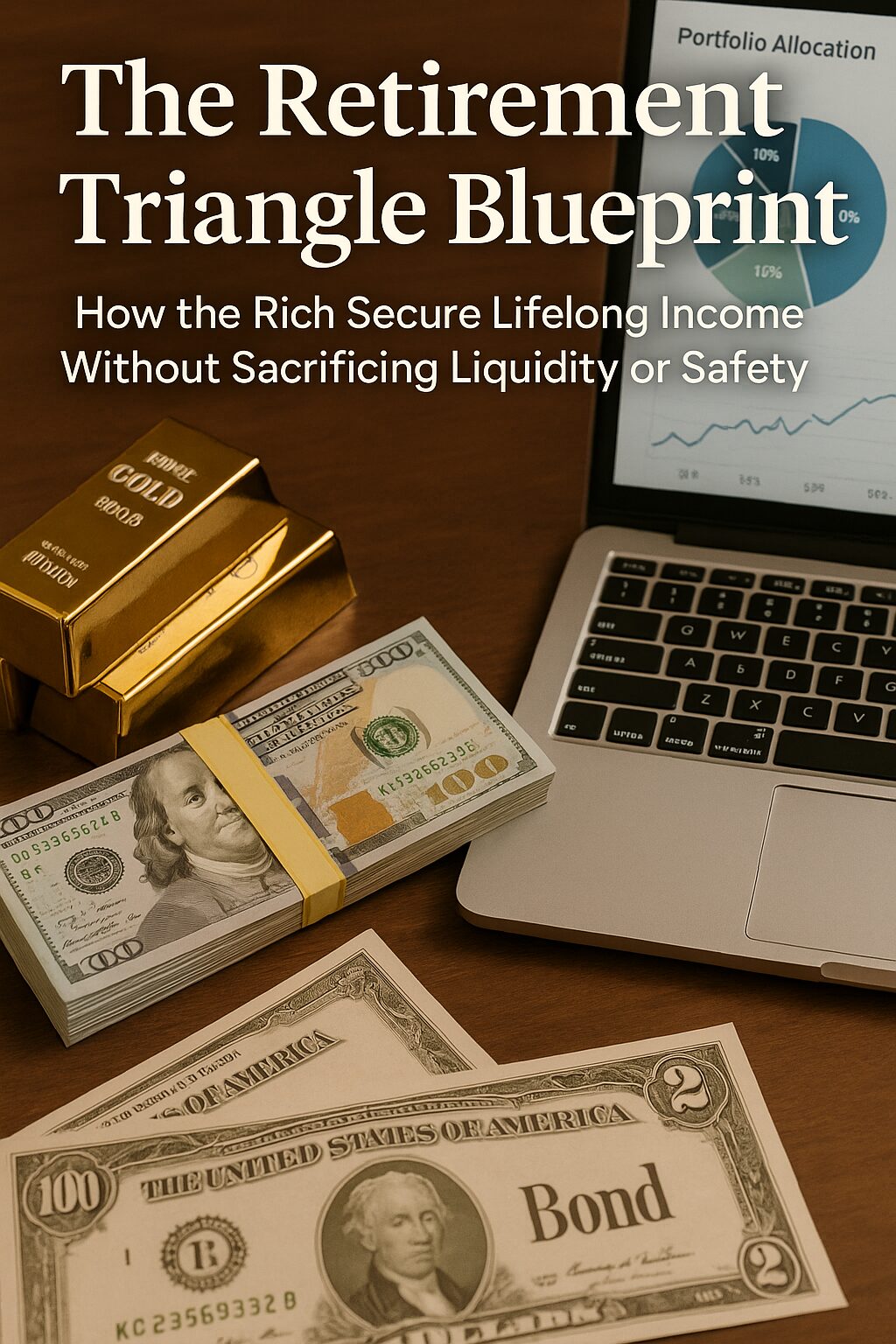The Hidden Challenge of Retirement
For many retirees, the biggest fear isn’t the stock market crashing—it’s outliving their money. Even with a sizable nest egg, poor planning can lead to a slow depletion of assets, forcing lifestyle changes in later years. Wealthy individuals avoid this fate by balancing three critical factors in their portfolios: Yield, Liquidity, and Risk.
This is the essence of the Retirement Triangle, a strategic framework that ensures income stability, easy access to cash, and protection from market volatility. In this article, you’ll learn exactly how the rich use this model to secure lifelong income without sacrificing safety.
1. Understanding the Retirement Triangle
The Retirement Triangle is built on three interconnected pillars:
- Yield (Income Generation) – The return you earn from investments, such as dividends, interest, or rental income.
- Liquidity (Access to Cash) – How quickly and easily you can convert assets into spendable money.
- Risk (Protection from Loss) – Measures to safeguard your portfolio from volatility, inflation, and catastrophic events.
Balancing these three elements is critical—focus too much on one, and the others can suffer.
2. The Rich Investor’s Approach to Yield
Wealthy retirees know that yield is the engine of financial independence. But they avoid chasing high returns at the cost of stability.
Core Yield Strategies:
- Dividend-Growth Stocks – Companies that increase dividends over time, outpacing inflation.
- Municipal and Corporate Bonds – Reliable interest payments with varying levels of safety.
- REITs (Real Estate Investment Trusts) – Passive real estate income with liquidity through stock markets.
By diversifying across these, the rich ensure a steady income flow without excessive risk.
3. Keeping Liquidity Without Sacrificing Returns
Liquidity is often underestimated until it’s urgently needed—unexpected medical bills, major repairs, or market opportunities.
Liquidity Tools the Rich Use:
- Cash Reserves & High-Yield Savings Accounts – Immediate access for emergencies.
- Money Market Funds (MMFs) – Low-risk, liquid investment vehicles with modest yield.
- Short-Term Bonds & Treasury Bills – Safe, interest-bearing assets with quick maturity.
Maintaining 6–12 months of expenses in liquid form ensures that long-term investments aren’t sold at a loss during downturns.
4. Managing Risk in Retirement Portfolios
Even conservative portfolios face risks—market crashes, inflation spikes, or geopolitical events.
Risk Management Tactics:
- Diversification Across Asset Classes & Geographies – Reduce exposure to any single market or economy.
- Hedging with Gold and Multi-Currency Assets – Protect against currency devaluation and inflation.
- Insurance Products – Annuities, long-term care insurance, and other safeguards.
Wealthy investors view risk not as something to eliminate, but as something to price and control.
5. Building Your Own Retirement Triangle
Here’s a step-by-step method to create a balanced portfolio:
- Assess Your Needs – Estimate annual expenses and desired lifestyle costs.
- Set Yield Targets – Choose safe income sources that meet or exceed expenses.
- Secure Liquidity – Keep enough in cash or equivalents for at least 6–12 months.
- Mitigate Risks – Diversify and use hedging strategies where appropriate.
- Review Annually – Adjust allocations as markets and personal circumstances change.
6. A Case Study – From High Risk to Balanced Security
Consider a retiree with 80% of their portfolio in stocks chasing high yields. In a downturn, they’d face both reduced income and falling principal. By reallocating to a balanced Retirement Triangle—50% yield assets, 25% liquidity assets, 25% risk-hedging assets—they secure income, protect capital, and maintain flexibility.
Conclusion – Stability, Access, and Growth in Harmony
The Retirement Triangle isn’t about maximizing one metric—it’s about optimizing all three. By learning from the rich and adopting a balanced approach, you can secure lifelong income, stay prepared for the unexpected, and protect your financial independence.
